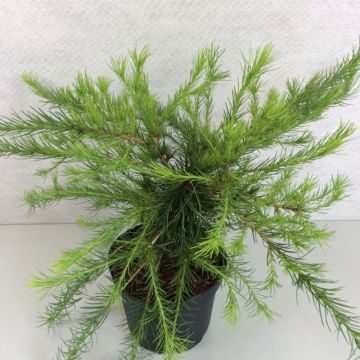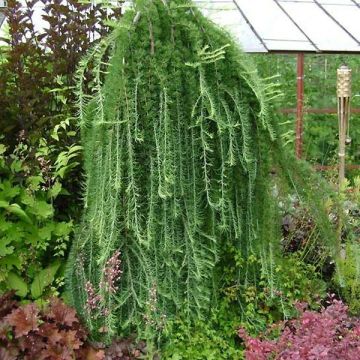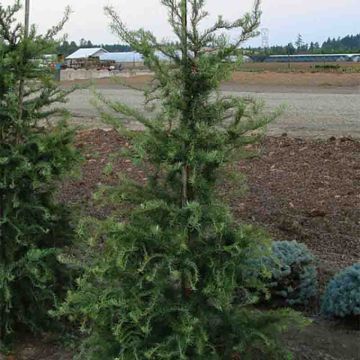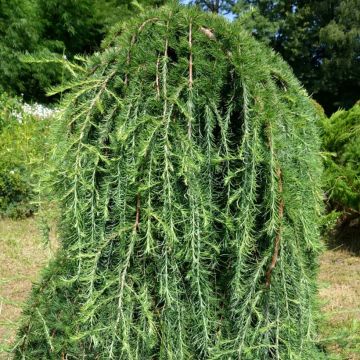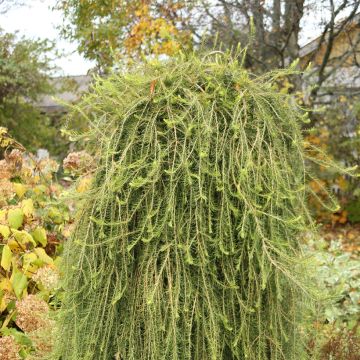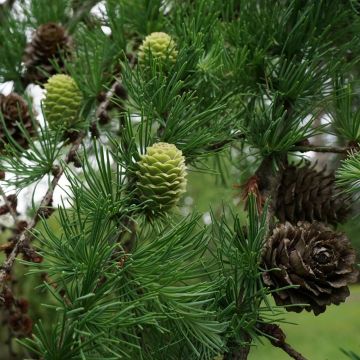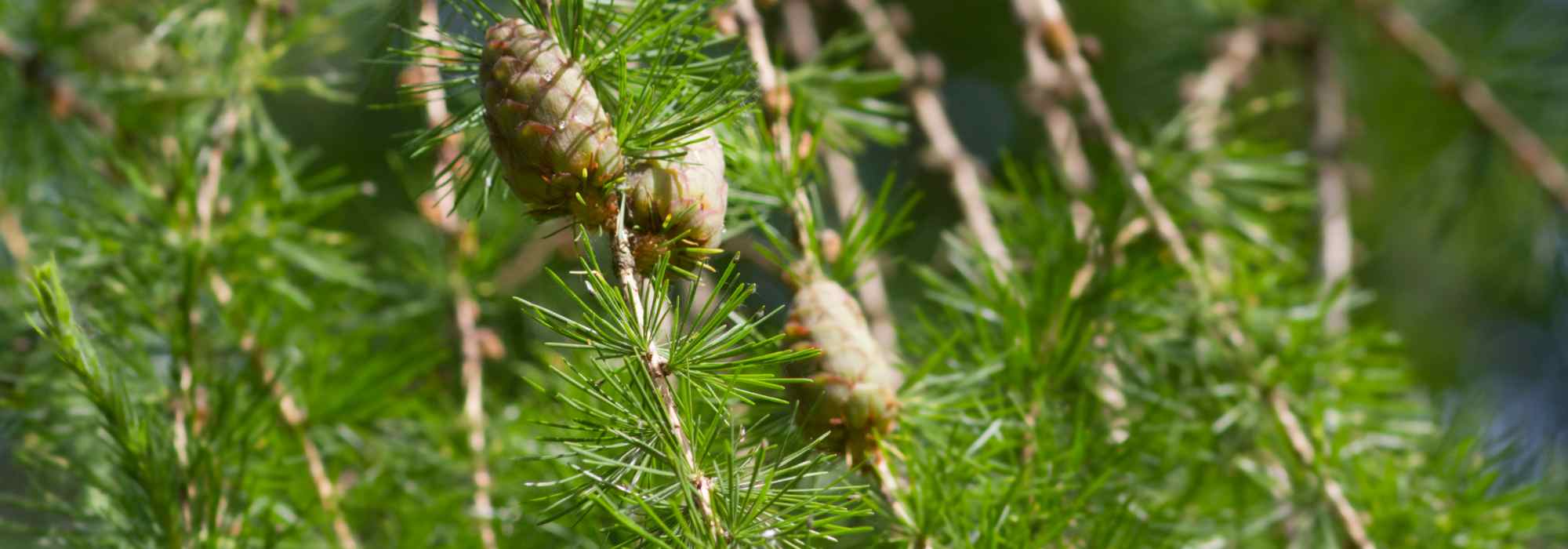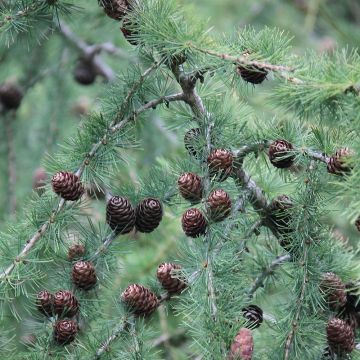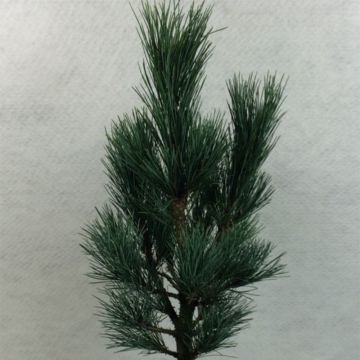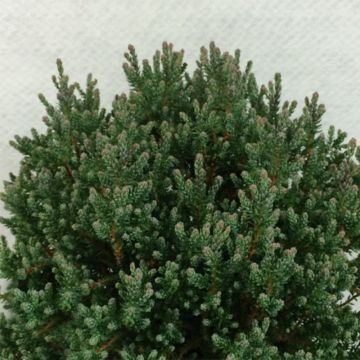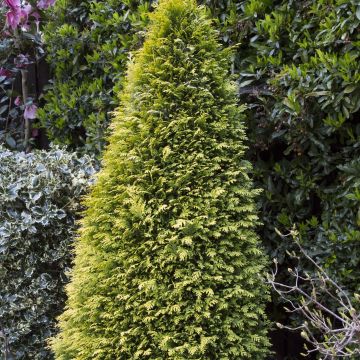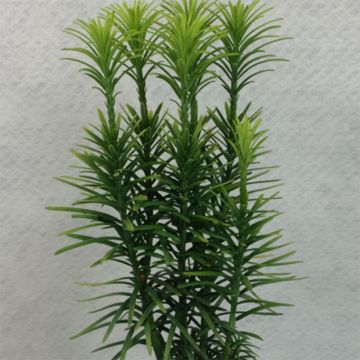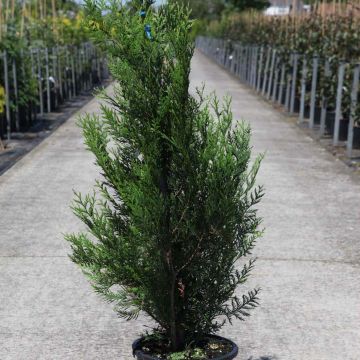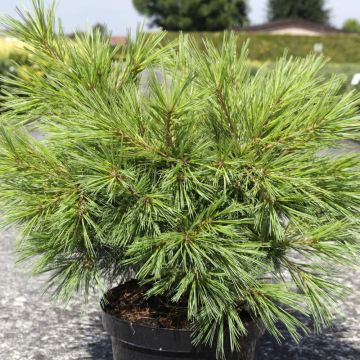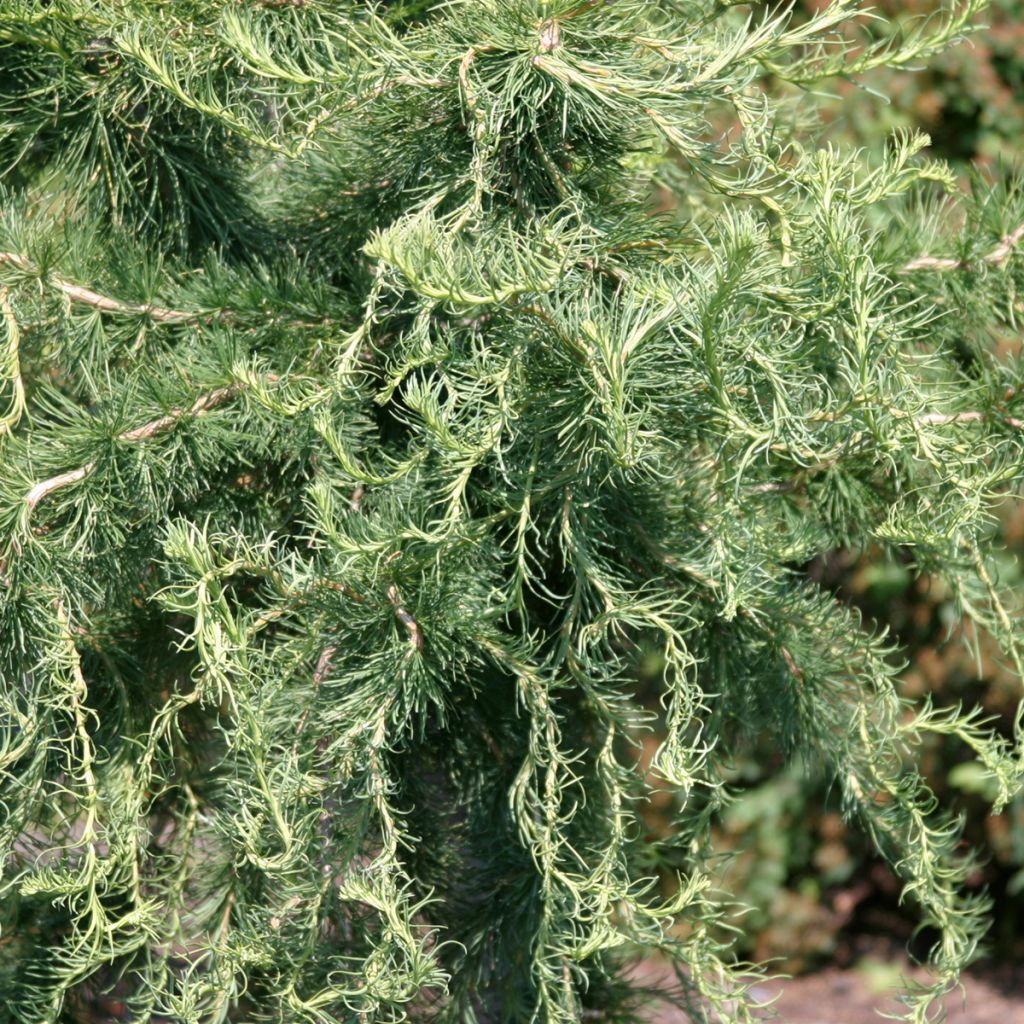

Larix decidua Horstmann's Recurved
Larix decidua Horstmann's Recurved
Larix decidua Horstmann Recurved
European Larch, Common Larch
Special offer!
Receive a €20 voucher for any order over €90 (excluding delivery costs, credit notes, and plastic-free options)!
1- Add your favorite plants to your cart.
2- Once you have reached €90, confirm your order (you can even choose the delivery date!).
3- As soon as your order is shipped, you will receive an email containing your voucher code, valid for 3 months (90 days).
Your voucher is unique and can only be used once, for any order with a minimum value of €20, excluding delivery costs.
Can be combined with other current offers, non-divisible and non-refundable.
Why not try an alternative variety in stock?
View all →This plant carries a 24 months recovery warranty
More information
We guarantee the quality of our plants for a full growing cycle, and will replace at our expense any plant that fails to recover under normal climatic and planting conditions.
Would this plant suit my garden?
Set up your Plantfit profile →
Description
Larix decidua Horstmann's Recurved is a compact German variety of European larch. This deciduous conifer has an extremely twisted and architectural habit, with stems branching off in all directions. In spring, they are covered with clusters of short, tender green needles, which darken as the season progresses. When autumn arrives, the foliage takes on a beautiful yellow hue before falling to the ground. This very hardy mountain variety prefers light and slightly moist soil, without too much limestone, even poor, as well as a sunny exposure.
The European larch, Larix decidua, is a tall tree that can reach a height of 30 m, belonging to the Pinaceae family, like Firs, Spruces, Cedars, and Pines. It is one of the few conifers, along with the Bald Cypress (Taxodium) and the Metasequoia, whose deciduous foliage falls in autumn. It is native to the mountains of central and southern Europe, where it is found at an altitude between 1400 and 2400 m. It is a pioneer species capable of improving poor or degraded soils, with great hardiness (down to -40 °C). Highly valued for its wood, it adapts very well to cultivation in lowland areas.
Larix decidua Horstmann's Recurved is quite different from the original botanical species. This cultivar was selected in 2003 from a seedling in Germany, at the Uwe Horstmann Nursery (Lower Saxony, north of Hanover). It is a compact variety with slow growth, 15 to 25 cm per year, which in about ten years will form a plant 1.5 m to 2.5 m tall and 1 m to 1.30 m wide. With a somewhat gangly appearance, it has a more or less conical habit, although often irregular. Its very twisted branches constantly fork, resembling snakes in motion, giving it a highly ornamental aspect in winter when the wood is bare. In spring, the branches are adorned with bright green tender needle-like foliage, inserted in small tufts irregularly spaced along the branches. The foliage darkens slightly throughout the growing season and finally takes on beautiful yellow colours in autumn.
This extremely cold-resistant, miniature conifer is sensitive to drought. Perfectly adapted to mountainous regions, it is not suitable for much drier southern areas. It should therefore be planted in moist, well-drained soil, exposed to the sun or possibly in light shade. Once these basic needs are met, it proves to be rather easy to cultivate, requiring almost no maintenance, except for some light pruning to shape its habit.
This Larix will interest collectors and enthusiasts of plant rarities. Its original twisted habit is very interesting and will allow it to find a place in a rockery, provided the soil is not dry, or in a contemporary garden. Its architectural silhouette, especially in winter, will inevitably attract attention. It can be the starting point for a small collection of bizarre plants, such as Cryptomeria japonica 'Globosa Nana', a dwarf Japanese Cedar that forms a one-metre-wide ball with a shaggy appearance. Corylus avellana Scooter is a dwarf twisted Hazelnut that does not exceed 1 m in height, with an appearance as ghostly as the Larch, but with round leaves that clearly distinguish it from its needles. And to stick with intricate shapes, while enjoying beautiful colours, Prunus incisa Kojo no mai is a dwarf Japanese flowering Cherry that combines a beautiful pale pink spring bloom with a festival of red colours in autumn when the foliage blazes before falling.
Plant habit
Flowering
Foliage
Botanical data
Larix
decidua
Horstmann Recurved
Pinaceae
European Larch, Common Larch
Cultivar or hybrid
Other Larix - Larch
View all →Planting and care
Larix decidua Horstmann's Recurved is a bush for a mountain climate that is sensitive to arid conditions. It should be planted in the spring or from September to November in well-drained soil, still retaining some moisture, even poor soil, preferably slightly acidic and low in limestone, in a sunny or semi-shaded location. A mixture of coarse sand, ericaceous soil, and compost added to the garden soil will work very well, in a planting hole measuring 50 cm on each side and in depth. Soak the root ball in a bucket of water for fifteen minutes before planting, then water abundantly once the hole is filled. If your soil is too heavy, a good trick is to plant your bush on a mound and mulch it with non-limestone gravel. Water regularly during the first two years, and in case of prolonged drought. This very hardy conifer also dislikes heavy and clayey soils that are waterlogged.
Planting period
Intended location
Care
Planting & care advice
This item has not been reviewed yet - be the first to leave a review about it.
Similar products
Haven't found what you were looking for?
Hardiness is the lowest winter temperature a plant can endure without suffering serious damage or even dying. However, hardiness is affected by location (a sheltered area, such as a patio), protection (winter cover) and soil type (hardiness is improved by well-drained soil).

Photo Sharing Terms & Conditions
In order to encourage gardeners to interact and share their experiences, Promesse de fleurs offers various media enabling content to be uploaded onto its Site - in particular via the ‘Photo sharing’ module.
The User agrees to refrain from:
- Posting any content that is illegal, prejudicial, insulting, racist, inciteful to hatred, revisionist, contrary to public decency, that infringes on privacy or on the privacy rights of third parties, in particular the publicity rights of persons and goods, intellectual property rights, or the right to privacy.
- Submitting content on behalf of a third party;
- Impersonate the identity of a third party and/or publish any personal information about a third party;
In general, the User undertakes to refrain from any unethical behaviour.
All Content (in particular text, comments, files, images, photos, videos, creative works, etc.), which may be subject to property or intellectual property rights, image or other private rights, shall remain the property of the User, subject to the limited rights granted by the terms of the licence granted by Promesse de fleurs as stated below. Users are at liberty to publish or not to publish such Content on the Site, notably via the ‘Photo Sharing’ facility, and accept that this Content shall be made public and freely accessible, notably on the Internet.
Users further acknowledge, undertake to have ,and guarantee that they hold all necessary rights and permissions to publish such material on the Site, in particular with regard to the legislation in force pertaining to any privacy, property, intellectual property, image, or contractual rights, or rights of any other nature. By publishing such Content on the Site, Users acknowledge accepting full liability as publishers of the Content within the meaning of the law, and grant Promesse de fleurs, free of charge, an inclusive, worldwide licence for the said Content for the entire duration of its publication, including all reproduction, representation, up/downloading, displaying, performing, transmission, and storage rights.
Users also grant permission for their name to be linked to the Content and accept that this link may not always be made available.
By engaging in posting material, Users consent to their Content becoming automatically accessible on the Internet, in particular on other sites and/or blogs and/or web pages of the Promesse de fleurs site, including in particular social pages and the Promesse de fleurs catalogue.
Users may secure the removal of entrusted content free of charge by issuing a simple request via our contact form.
The flowering period indicated on our website applies to countries and regions located in USDA zone 8 (France, the United Kingdom, Ireland, the Netherlands, etc.)
It will vary according to where you live:
- In zones 9 to 10 (Italy, Spain, Greece, etc.), flowering will occur about 2 to 4 weeks earlier.
- In zones 6 to 7 (Germany, Poland, Slovenia, and lower mountainous regions), flowering will be delayed by 2 to 3 weeks.
- In zone 5 (Central Europe, Scandinavia), blooming will be delayed by 3 to 5 weeks.
In temperate climates, pruning of spring-flowering shrubs (forsythia, spireas, etc.) should be done just after flowering.
Pruning of summer-flowering shrubs (Indian Lilac, Perovskia, etc.) can be done in winter or spring.
In cold regions as well as with frost-sensitive plants, avoid pruning too early when severe frosts may still occur.
The planting period indicated on our website applies to countries and regions located in USDA zone 8 (France, United Kingdom, Ireland, Netherlands).
It will vary according to where you live:
- In Mediterranean zones (Marseille, Madrid, Milan, etc.), autumn and winter are the best planting periods.
- In continental zones (Strasbourg, Munich, Vienna, etc.), delay planting by 2 to 3 weeks in spring and bring it forward by 2 to 4 weeks in autumn.
- In mountainous regions (the Alps, Pyrenees, Carpathians, etc.), it is best to plant in late spring (May-June) or late summer (August-September).
The harvesting period indicated on our website applies to countries and regions in USDA zone 8 (France, England, Ireland, the Netherlands).
In colder areas (Scandinavia, Poland, Austria...) fruit and vegetable harvests are likely to be delayed by 3-4 weeks.
In warmer areas (Italy, Spain, Greece, etc.), harvesting will probably take place earlier, depending on weather conditions.
The sowing periods indicated on our website apply to countries and regions within USDA Zone 8 (France, UK, Ireland, Netherlands).
In colder areas (Scandinavia, Poland, Austria...), delay any outdoor sowing by 3-4 weeks, or sow under glass.
In warmer climes (Italy, Spain, Greece, etc.), bring outdoor sowing forward by a few weeks.






























